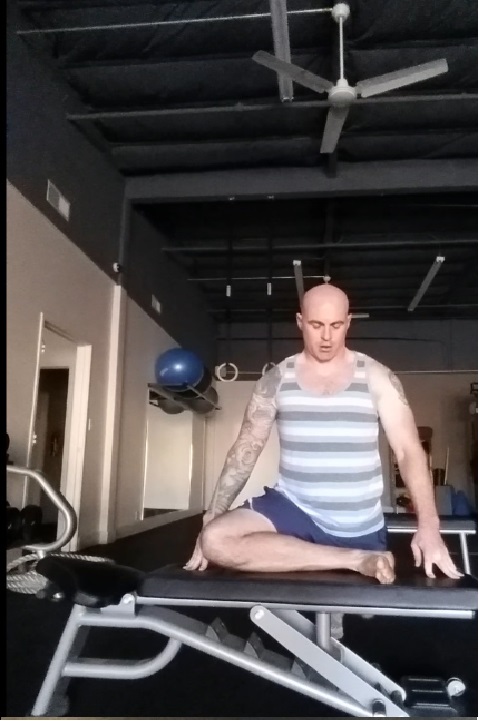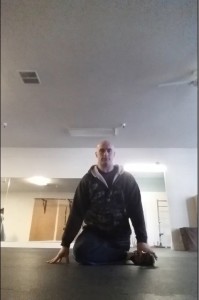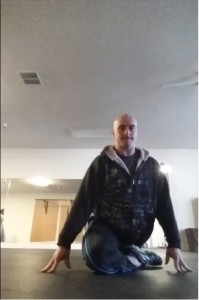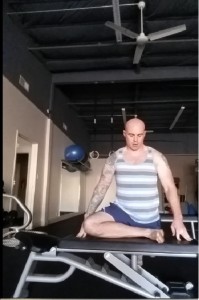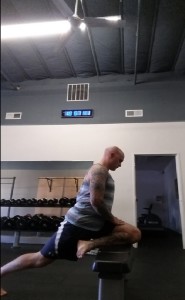The pigeon stretch is a great stretch for a number of reasons. This stretching movement can help increase mobility of the hip, improve the effectiveness of your exercise routines and decrease the likelihood of hip injuries while solving hip pain issues. The “pigeon” stretch is traditionally a stretch that assists with external rotation of the hip joint. There are a number of different muscles that live in the hip joint. These muscles are argued to be some of the strongest muscles in the body which are responsible for the most utilized movements of the human race, walking. We use our legs arguably more than any other part of the body throughout our everyday lives. Therefore, assisting the function of our legs is beneficially to our functionally movements in our daily activities.
One reason why performing the pigeon stretch would be beneficial is the release of the piriformis muscle over the sciatic nerve. The piriformis muscle is the deepest of the muscles in the gluteal region of the hip. Its function is to assist in external rotation of the hip joint. Symptoms of sciatica occur for various reasons. One culprit of sciatica is the compression of the piriformis muscle on top of the sciatic nerve. Compression of the sciatic nerve causes pain or numbness down the back of the leg from the butt cheek all the way to the back or the heel. This can be extremely painful and annoying. Sciatica can cause people to lose mobility, lose sleep at night, or cause disruption throughout their day due to increased pain and aggravating symptoms. A good way to counter sciatica would be to decompress the deep muscles of the posterior hip joint, which include the piriformis muscle. The pigeon stretch opens up the deep muscles of the hip joint by externally rotating the hip. Therefore opening up the hip socket by externally rotating the hip will lengthen the surface area of the piriformis muscle and put less pressure on the sciatic nerve, which help decrease symptoms of sciatica.
In addition to decreasing symptoms of sciatica, decompressing the sciatic nerve and mobilizing the hip joint can help with coordination of the hip joint through increased range of motion and increased coordination through increased neural activity of the nerves going throughout the leg. By increasing the flexibility of the hips, more movements such as squats, deadlifts and lunging movements can be performed more effectively. This means and increase in the overall execution of important compound lower body exercises. Increased performance of these exercises will lead to increased strength of the hip joint.
Alongside mobility of the hip, when the sciatic nerve is decompressed, more muscle groups of the hip joint can be activated due the increased electrical conduction of the nerve. Electrical currents travel throughout the nerve to make muscular contractions occur. If we compare a nerve to an electrical wire, a damage electrical wire will not give a very good signal to the device it is powering. A new electrical wire would supply a better pathway for an electrical signal to travel. The same applies to the nerves in our body. If a nerve is compressed, electrical activity cannot occur correctly. Therefore, increased the pathways that nerve signals can occur in the body will increase the speed of nerve to muscle to signals, which will increase strength and coordination of the movements we do in our everyday lives.
This all being said, the pigeon stretch is good.
Below are a few variations on how to perform the pigeon stretch!
Tips on how to “pigeon!”
This is how a pigeon stretch should look from the front. You are putting the lateral part of your shin on the ground in front you. Notice that there is an upright posture of the torso with the chest facing forward. (Below)
If you find putting the shin on the ground with a ninety degree angle too challenging due to inadequate flexibility, simply bend your knee to decrease the angle of your shin and you should still be able to achieve a good enough stretch on the hip. (Below)
You can also decrease the angle from your shin to knee while doing the stretch on an inclined surface as well if your flexibility does not allow you to stretch as far. This will allow you to get a strong external rotation of the hip without getting as close to the ground. (Below).
You can also decrease the angle from your shin to knee while doing the stretch on an inclined surface as well if your flexibility does not allow you to stretch as far. This will allow you to get a strong external rotation of the hip without getting as close to the ground.(Below).

